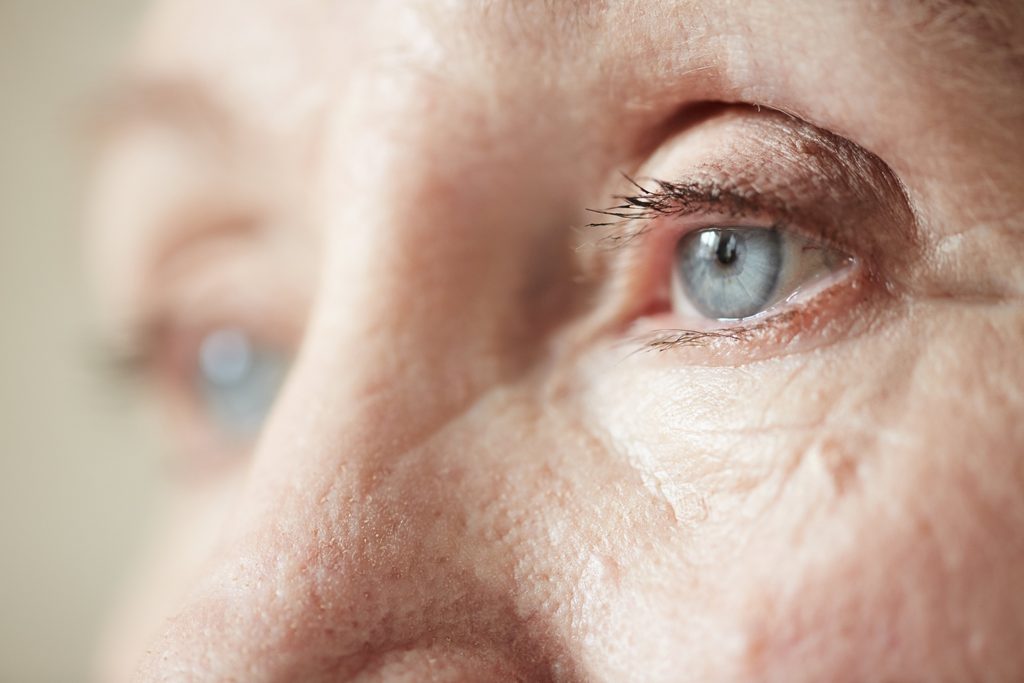9 Subtle Signs of a Dangerous Eye Infection

Pain, redness, itching… find out how to tell if your eye infection is dangerous or just annoying.
If you have young children in daycare or school, then you are familiar with pink eye. This contagious eye infection is the most common type of eye infection, but at times it can be difficult to tell if it’s something more. While some infections like pink eye can resolve on their own, others can cause permanent damage and require immediate treatment. According to the American Academy of Ophthalmology, almost one million people seek treatment for an eye infection each year.
Common eye infections
Conjunctivitis (pink eye) refers to the inflammation or infection of the conjunctiva, the clear membrane that lines the eyelid. Most cases are viral and resolve on their own. If the infection is bacterial, you will require antibiotic eye drops. If you are experiencing eye redness and discharge, here’s how to tell the difference between pink eye and allergies.
Blepharitis is an inflammation of the eyelid and can be caused by a bacterial infection. While it does not affect vision, it can be quite uncomfortable.
Iritis refers to inflammation of the iris or coloured part of your eye. It can be caused by the shingles virus.
Keratitis is an infection of the cornea, the clear covering over your pupil and iris. Infectious keratitis can be caused by bacteria, viruses, parasites, and fungi. While it is treatable, it can cause permanent vision impairment if left untreated.
Endophthalmitis is an infection inside of the eye that causes inflammation in the whites of your eyes. According to the American Society of Retina Specialists, infectious endophthalmitis is an emergency and may require immediate surgery.
How do eye infections form?
A common cause of eye infections is wearing contaminated contact lenses. If your contact lens or the case has bacteria on it, those harmful germs will spread to your eye as soon as you touch the lens to your eye. You could also develop an infection by overwearing your contact lenses, which causes inflammation that could cause bacteria to form.
You could also experience an eye infection after coming in contact with contaminated water. This could be water from a swimming pool, the shower, or washing your contact lens. Finally, you could develop a contagious eye infection like conjunctivitis by coming in contact with someone who has the infection.
What are the signs of an eye infection?
- Watery or dry eyes
- Eye discharge
- Redness and swelling
- Itching
- Burning
- Pain
- Sensitivity to light
- Blurred or decreased vision (emergency)
- Cloudiness over the cornea (emergency)
Who is most susceptible?
People with compromised immune systems are at higher risk for any kind of infection including eye infections. If you currently smoke tobacco, research indicates that you are at higher risk for developing an eye infection.
If you wear contact lenses, you are more at risk of developing an infection. Contact lenses are just one of the reasons you could have bloodshot eyes. To lower your risk, never sleep in your lenses and wash them (and their case) regularly.
Individuals who have experienced certain types of eye injuries could also be more at risk of developing an infection. (This is what it could mean if you have a red spot on your eye.)
How are they treated?
Your treatment will depend on what type of eye infection you have. If you have pink eye, don’t rush to treatment as it could be unnecessary.
If you require a topical antibiotic, the medication will be applied directly to your eye in the form of drops or ointment. Sometimes an oral antibiotic is needed. Your doctor may also prescribe steroid eye drops to help calm down the inflammation.
Regardless of what type of infection you’re healing from, your doctor will most likely recommend that you take a break from your contact lenses—hard lenses should be sanitized and soft ones should be replaced.
Your optometrist wishes you knew these eye care tips.



